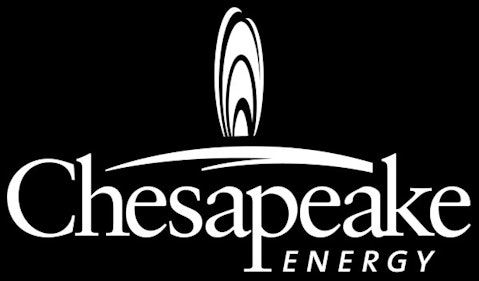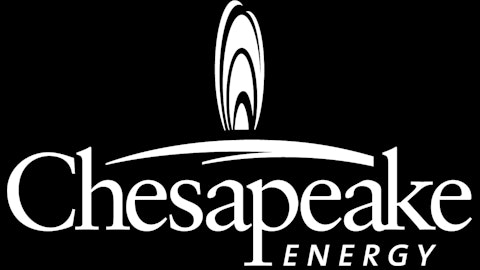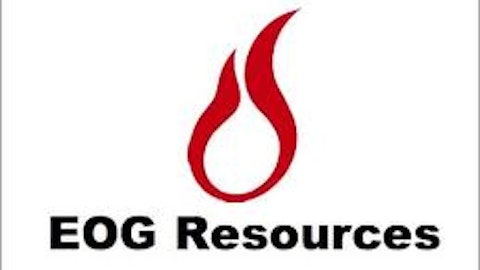After 24 years at the helm of Chesapeake Energy Corporation (NYSE:CHK), co-founder and CEO Aubrey McClendon will retire from the company on April 1, 2013. It was his innovative — and borderline reckless — purchasing that made Chesapeake’s asset value the envy of the US energy industry. At a time when other producers were still scratching their heads at the prospect of developing shale gas, Chesapeake pioneered the practice. When the industry ate itself and over-produced, sending natural gas prices in the US plummeting, Chesapeake nearly went bust.

Plenty of onshore US natural gas liquids assets to develop
Chesapeake intends to increase profitability by focusing mostly on its liquids rich plays, of which it has plenty. Chesapeake is the largest leaseholder in the Eagle Ford, Utica, and Marcellus Shales. The company’s headquarters in Oklahoma City is within a day’s drive from four liquids rich plays in the Anadarko Basin.
Impressive liquids production growth at Eagle Ford Shale
During the Q4 earnings call, COO Steve Dixon highlighted Chesapeake’s Eagle Ford Shale progress as an example of what the company intends to do across all its liquids rich plays. The company’s liquids production at Eagle Ford Shale increased more than three times year over year from an average production rate of 12,300 barrels per day in Q4 2011 to 50,800 barrels per day in Q4 2012. By the end of 2013 the company expects an average production rate of 70,000 barrels per day of natural gas liquids from the Eagle Ford Shale alone.
Looking forward
During 2012 Chesapeake produced 1,129 bcf of natural gas, 17,615 Mbbls of NGLs, and 31,265 Mbbls of oil, which produced an operating cash flow of just over $4 billion. In 2013, the company expects to decrease natural gas production by about 7%, increase NGL production by about 42%, and increase oil production by about 18%. Operating cash flow is expected to come in at between $4.85 billion and $5.15 billion. Those numbers are based on the assumption that NGL prices don’t fall much further than they did during 2012.
Chesapeake not the only producer making the shift towards liquids
Marathon Oil Corporation (NYSE:MRO) is also shifting towards natural gas liquids. The company reported an increase in NGL production of 107% year over year from about 46.7 Mbbls in 2011 to about 97 Mbbls in 2012. Marathon also has assets in the Eagle Ford Shale that averaged over 65,000 barrels per day in 2012, with plans to continue increasing production there.
Anadarko Petroleum Corporation (NYSE:APC) is another large producer of natural gas liquids operating in the Eagle Ford Shale, and throughout the US. Over the past two years Anadarko has increased its US sales volumes of NGLs from 23 million barrels in 2010 to 30 million barrels in 2012. Although Anadarko has widespread global operations, it too is enjoying increased profits from NGL production in the US.
Both Marathon and Anadarko were far less exposed to the US dry natural gas market than Chesapeake. As a result came through the spring 2012 crash in natural gas prices with far less injury. For the entire year of 2012 Chesapeake reported a loss of $940 million or $1.46 per share. Although 2012 was hardly a banner year for Marathon and Anadarko, they both finished 2012 in the black. Anadarko reported net income of about $2.38 billion from $13.41 billion in revenues. Rocksteady Marathon Oil lived up to its name and reported its 17th consecutive year of profits with $1.58 billion from $16.22 billion in revenues.
Transport capacity and NGL demand still a concern
During the Q4 earnings call the COO of Chesapeake, Steve Dixon, mentioned a reduction at Eagle Ford of about 2,500 barrels per day during Q4 due to inadequate processing capacity at a nearby plant run by Regency Energy Partners LP (NYSE:RGP). Assuming Chesapeake’s competitors intend to use the same transport facilities, there’s a chance that Chesapeake’s NGL production could be significantly reduced due to third party capacity.
Shifting production towards liquids isn’t the worst idea Chesapeake has ever had, and they certainly have the assets and resources to become the number one NGL producer in the country. The big question now is: how long can demand and transport capacity for NGLs support increases in production from the likes of Chesapeake and its competitors? I wouldn’t recommend starting a long position in cash-strapped Chesapeake until we can be certain that production of NGLs won’t outpace demand and send prices crashing down like dry natural gas did last spring.
The article Chesapeake’s Production Mix Is Moving Towards Liquids originally appeared on Fool.com and is written by Cory Renauer.
Copyright © 1995 – 2013 The Motley Fool, LLC. All rights reserved. The Motley Fool has a disclosure policy.





